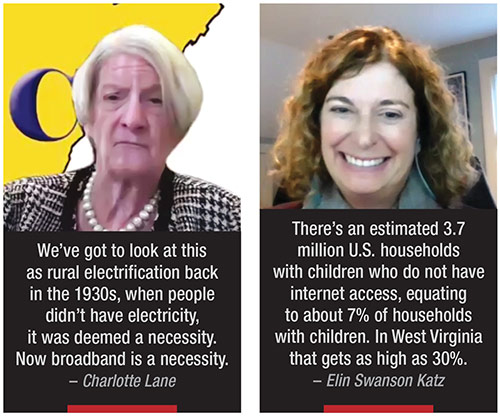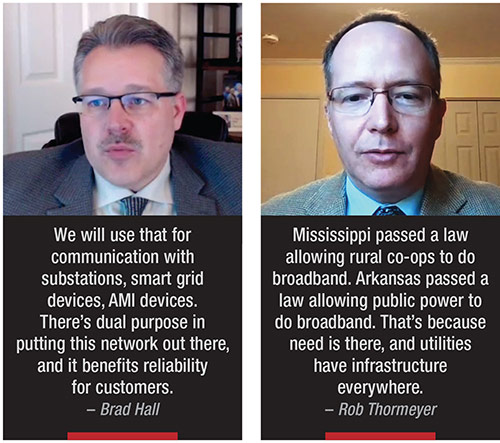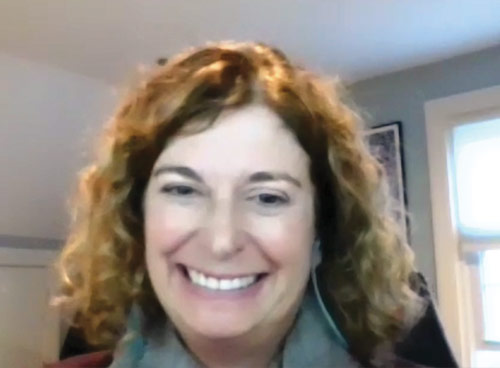NASUCA Annual Meeting
Elin Swanson Katz is Managing Director, Utilities & Associate General Counsel for Tison.


Here are some highlights from the NASUCA Annual Meeting:
COVID-19 has brought the broadband digital divide between rural and urban consumers into stark relief. Utilities may be in the best position, by using existing or easy to expand infrastructure, to help bridge this digital divide and support broadband deployment in underserved rural areas.
This panel examined how West Virginia focused efforts to bridge this divide by creating a Broadband Enhancement Council and working with utilities to build middle mile infrastructure. This panel examined practical challenges and what it takes to replicate this success.
Tison, Managing Director, Utilities & Associate General Counsel, Elin Swanson Katz: In full disclosure, when I left my post, the first thing I did when I went to Tilson was take the pen on writing West Virginia's state broadband policy plan, because the West Virginia Broadband Council is our client.
To give you some background facts, there's an estimated 3.7 million U.S. households with children who do not have internet access. That equates to about seven percent of households with children. There are places in West Virginia where that gets as high as thirty percent.
West Virginia Public Service Commission Chair Charlotte Lane: We in the Commission recognize that perhaps almost twenty-five percent of our citizens probably do not have broadband. The FCC says maybe eighteen percent, but I think it's higher.
In our last legislative session in January, through part of March 2020, we worked hard on a bill to allow the electric utilities to build middle mile. We had the support of American Electric Power and FirstEnergy, which are the two big electric utilities in West Virginia. We worked and came up with a bill that everybody could agree to.
That allows the electric utilities to build fiber and middle mile, and to the extent it's not necessary for their own usage, then all customers of American Electric Power and FirstEnergy will be paying for this middle mile build out. We estimated that would perhaps be as much as maybe a dollar a month for the average electric customer. We passed without a lot of opposition.
I stressed and the electric utilities stressed that we've got to look at this as rural electrification back in the 1930s. When people didn't have electricity, it was deemed a necessity. Now we know broadband is a necessity.
Vice President, External Affairs, Appalachian Power Company, Brad Hall: The Appalachian Mountains, as beautiful as it is, it's very difficult to get infrastructure into these areas. The lack of population makes it a difficult business case for broadband to be out in these areas.
We are a part of the overall American Electric Power network, but this is Appalachian Power. We're talking about projects in the West Virginia territory. This project that Chairman Lane's referred to, is a project that we have put forward to the Broadband Enhancement Council as part of the legislation, and I'll explain that. It is for Logan and Mingo Counties in southern West Virginia. This is on the northeast border of Kentucky.
We have about twenty thousand electric meters in those two counties, and about fifteen thousand are unserved, meaning when they have service it's below the twenty-five through definition by the FCC for speeds, which is twenty-five megabits per second download, three megabits per second upload.
The proposed fiber lines we would build in those two counties is about four hundred plus fiber miles. It would be ninety-six count fiber. Forty-eight of those counts, fiber would be used for the electric utility, and forty-eight would be used to lease for this project or other potential backhaul opportunities. This is about a fifty plus million capital investment for our company, and it's also going to utilize two hundred existing miles of fiber.
We then had to go through an RFP process to select the internet service provider because we are not going to be an internet service provider. We had to do an ISP selection partner with us to lease the network. We finished that process, and Gigabit Networks was selected, and that was presented to the Broadband Enhancement Council in September of this year. We are on schedule to file our case with the PSC by the end of 2020.
I want to point out there's a dual purpose in this. As you heard me say, we're going to build ninety-six count fiber, and forty-eight of those will be used for utility. We will use that for communication with substations, smart grid devices, and AMI devices. There's dual purpose in putting this network out there, and if we're already going to be building that anyway, it benefits reliability for customers, and it's going to benefit customers to get this service.
Utilities Technology Council, Senior Director, Communications and Advocacy, Rob Thormeyer: If you talked to me about two years ago and you've asked, do you think you'll see more cooperatives and public power utilities doing this? I would've said, not likely, because the legislation at the state level is hard to get done, but last year we saw Mississippi pass a law allowing their rural cooperatives to do broadband. That same year, Arkansas passed a law allowing their public power organizations to do broadband. That's because the need is there, and utilities have infrastructure everywhere.
NASUCA Annual Meeting articles:
Category (Actual):
Department:
